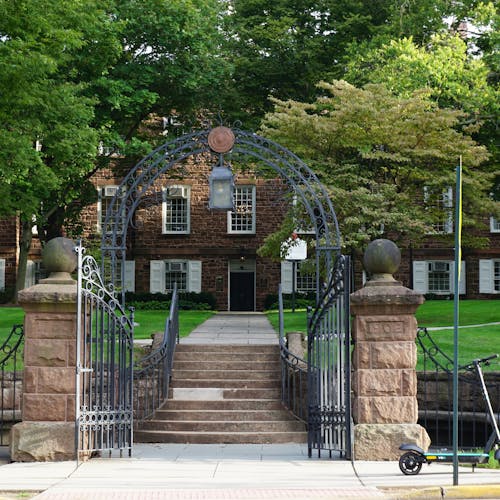New U. report outlines potential uses for publicly owned land in Newark

Earlier this month, the Rutgers Law School Center for Law, Inequality and Metropolitan Equity (CLiME) in Newark issued a report outlining ways by which towns can better use data about publicly owned property.
David Troutt, a distinguished professor at Rutgers Law School—Newark, founding director of CLiME and co-author of the publication, said the report's research stemmed from the realization that different types of jurisdictions within a state experience inequality due to disparities in assets needed for effective governance.
This deficit may look like unfulfilled research, be it due to a lack of finances or experienced individuals to conduct these investigations, he said.
To conduct this research, Troutt said CLiME organized three unique simulations, dealing with economical housing, economic progress through the lenses of both employment and homes and environmental infrastructure and risk reduction.
He said the first simulation indicated the potential ability to create more than 2,000 low-income housing options. Moreover, the land managed by Newark is subsidized, allowing the city to achieve its affordable housing goals at costs lower than what would be typical to establish this kind of housing.
The second simulation focused on developing business opportunities through manufacturing and other commercial efforts, Troutt said. By repurposing publicly owned land, the city could enhance job opportunities in neighborhoods lacking the benefits of commercial infrastructure.
"We hope that the second simulation is able to not only talk about small business development and the importance of local job creation but also reach some public health considerations, like the importance of overcoming food deserts or providing local health clinics that cut down the time it takes for people, especially the elderly and children, to get preventive care," he said.
The third simulation investigated potential negative effects of climate change, such as flooding and heat islands, as well as how those could be reduced through the implementation of more green spaces and recreational areas in underutilized locations, Troutt said.
While this specific research was conducted in Newark, he hopes its implications carry on beyond the city.
"The goal of applied research like this is not only to have a demonstrable impact in terms of the built environment but to advance the discourse so that people are talking in a more informed and excited way than they might have before they read the research," he said. "So, we hope to stimulate a lot of good talk as well as good action."
CLiME also studies similar issues in other New Jersey jurisdictions, such as residential racial integration in Camden, gentrification in Jersey City and Paterson and other topics broadly relating to public health and infrastructure.
Troutt said this study focused specifically on Newark for a multitude of reasons. One of these reasons is tied to Rutgers—Newark's identity as an anchor institution.
An anchor institution is defined by Rutgers—Newark as one that remains dedicated to its home community and works with other local partners from various industries, such as health or entertainment, to improve the quality of life for those that reside in its locality. Through this research, the Center wanted to help the city achieve its objectives in policy development.
Another reason the Center focused on Newark relates to how the city is typically perceived to be less desirable than New Jersey's suburbs, Troutt said.
"(Newark) really enjoys a very unfair rap as a vibrant and dynamic municipality. So, we wanted to work to overcome some of those unfortunate character perversions of a city that we know and love so much," he said.
The study also placed a focus on working with the city rather than simply directing it. This was done by sending Elana Simon, CLiME's senior research fellow and co-writer of the report, to work directly with Newark's Property Management Division in its Department of Economic Housing and Development in Newark City Hall.
The research posed a stirring experience for collaborators to apply their academic knowledge to an actual simulation, Troutt said. Despite any difficulties, it served as a positive opportunity to participate in crucial paths toward development.
"It really does rely on collaboration," Troutt said. "This isn't just a bunch of university experts coming in and telling people, 'You should do it like this.' We know. It's actually very humbling work. People are really smart … We're learning all the time in partnership with them."



